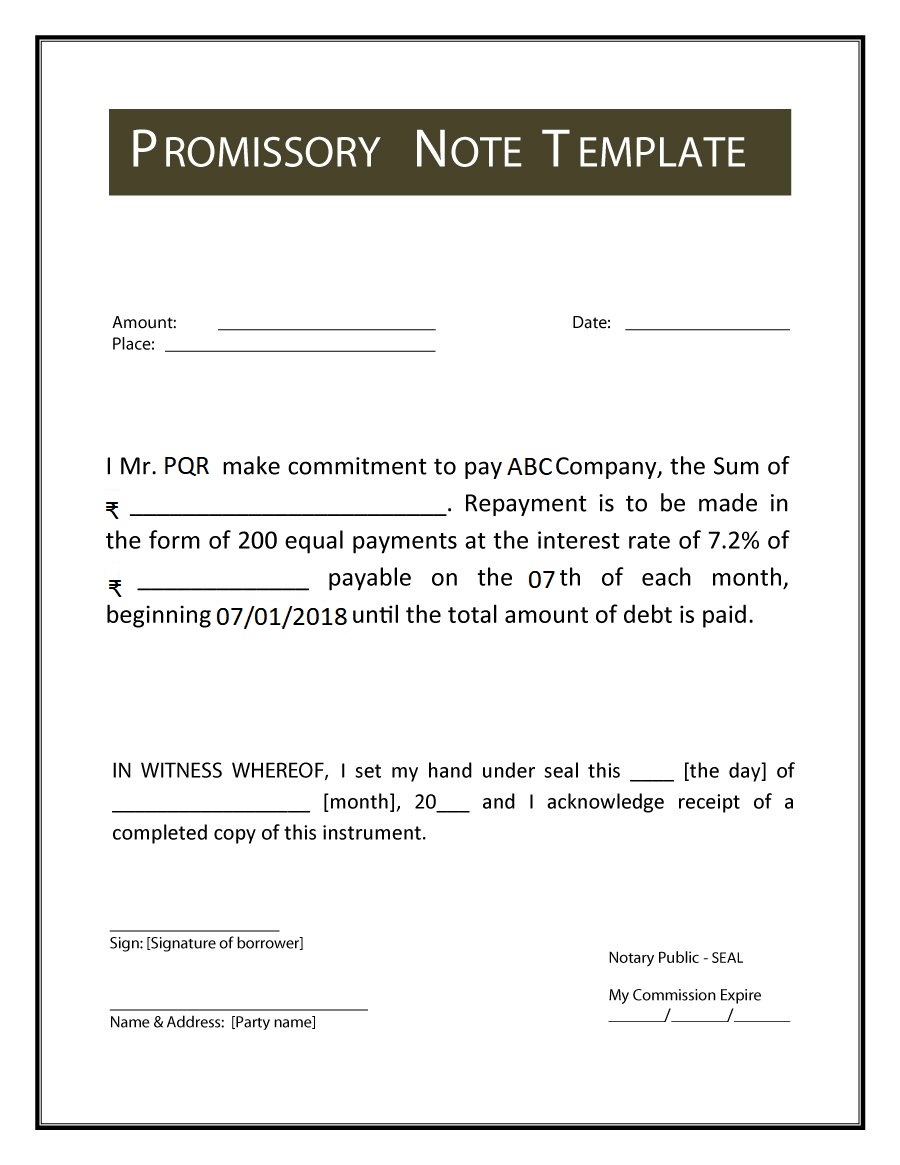If you are giving your money to borrow or taking money from somebody, it is a good idea to sign a promissory note. This is a debt instrument and also a legal financial tool and it is signed by a party (sometimes called the note’s issuer or not maker) that is promising to another party to pay the debt either on-demand or at a specified future date.
This is a written agreement that will be signed by the drawer with a promise to pay the money on a specific date or whenever demanded.
A promissory note includes all the terms pertaining to the indebtedness, such as the principal amount, interest rate, maturity date, date and place of issuance, and issuer’s signature.
Promissory Notes Types:
There are various types of promissory notes, they are mentioned below.
Personal Promissory Notes – When somebody takes a loan or borrows from family members or friends. In general, people avoid legal writings when taking a loan from close contact, the promissory note shows belief and trust in the interest of the borrower.
Commercial – Here, the note is made when dealing with commercial lenders such as banks. The most commercial promissory agreement is similar to personal notes.
Real Estate – This is similar to commercial notes in terms of nonpayment consequences. If the borrower becomes a defaulter, then the party has the right to keep the property until the debt is cleared. It is a little risky as all the essential details become public, which can hinder the borrower’s credit history in the future.
Investments – The promissory note is occasionally used to raise funds for the business. It is used for security purposes and managed by securities laws. It includes terms and conditions related to returns of investment.

Parties of Promissory Note
Three primary parties are included in the promissory note, they are drawee, drawer and payee.
Drawer: A drawer is a person who agrees to pay the drawee a certain amount of money on the maturity of the promissory note. He/she is also known as a maker.
Drawee: She/He is an individual, in whose favour the note is prepared. In usual cases, the drawee is also the payee until and unless the promissory note is transferred specifically in favour of the payee. For e.g., Ramesh is considered a drawer if he promises to pay Suresh Rs. 10,000 (Suresh is the drawee). However, if the same promissory note is transferred in favour of John, then John becomes the payee.
Payee: A payee is someone to whom the payment is made.
Most of the time, the payee and drawee are the same people to whom the cash is paid. The party who has loaned the money keeps the promissory note, and when the due is cleared, the payee or drawee cancels the note and gives it to the drawer/payee.
Top Features of any Promissory Note
Pay Defined Amount – It is a promise made by a borrower to pay the decided money at a specific time or when demanded. The mentioned amount in any promissory note can not be changed neither be added nor subtracted.
Detailed Information – The note has all the required information including the issue date, date of maturity, terms of repayment and name of the drawer and payee.
Printed/Written Agreement – A promissory note is always accepted in writing. Any kind of oral promise to pay money is not accepted.
Legal Composition – All the payments should be made in the nation’s legal currency.
Signed Documents – The document is duly signed and drawn by the drawer and stamped.
Unconditional Promise – The promise to pay a certain amount of money must be absolute in all cases. In such notes, a conditional guarantee is not accepted.
You can find more interesting and important finance-related articles here.

Leave a Reply